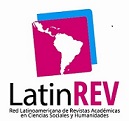The pristine nostalgia and the vulnerability of domestic workers in Roma, by Alfonso Cuarón
DOI:
https://doi.org/10.26439/en.lineas.generales2021.n6.5591Keywords:
memory, social classes, esthetics and politics, domination, indigenous communitiesAbstract
Alfonso Cuarón described Roma (2018) as “his first film”. Filmed in black and white, it tells the story of Cleo, a domestic worker in a house in the “Roma” neighborhood where she works for a middle-class family that is going through the divorce of their parents. Cleo becomes pregnant with a man who despises her. The family also witnesses the government’s repression in the so-called “Halconazo” of 1971. I am interested in the film not only for the aesthetic beauty in the careful reconstruction of a memory, but also for exhibiting the class hierarchy and the structures of domination towards indigenous female employees fleeing poverty and rural backwardness as a result of a disinterested Mexican government in their own minority communities.
Downloads
References
Bloom, T. (2018). Noncitizenism: Recognising Noncitizen Capabilities in a World of Citizens. Routledge.
Clariond, A., y Nuncio, G. (Directores). (2020). Road to Roma. [Película]. Netflix Studios.
Cuarón, A. (2016). Roma [Guion]. https://deadline.com/wp-content/uploads/2018/12/Roma-Screenplay-SPANISH.pdf
Cuarón, A. (Director). (2018a). Roma [Película]. Esperanto Filmoj; Participant Media.
Cuarón, A.. (2018b). Roma. Assouline.
Chorba, C. (2007). Mexico, from Mestizo to Multicultural: National Identity and Recent Representations of the Conquest. Vanderbilt University Press.
James, N. (2019). Where the Heart. Sight & Sound, 29(1-2), 56-62.
Nahmad Rodríguez, A. D. (2007). Las representaciones indígenas y la pugna por las imágenes. México y Bolivia a través del cine y el video. Latinoamérica, 45, 105-130.
Oliva, J. (2018). Alfonso Cuarón: el adiós a las inseguridades. Cine Premiere. https://reader.magzter.com/preview/o7fvaia1hsmqh4kc1mtynj3126490/312649#page/8
Rollins, J. (1985). Between Women: Domestics and Their Employers. Temple UP.
Rossell, D. (2002). Ricas y famosas: México 1994-2001. Océano.
Teodoro, J. (2018). The Turning of the Earth. Film Comment, September-October, 32-35.
Tovar, E. (29 de diciembre del 2018). Nostalgia y misticismo vikingo en Roma de Cuarón. Cine Oculto. https://cineoculto.com/2018/12/nostalgia-y-misticismo-vikingoen-roma-de-cuaron/
Valdés, M. (13 de diciembre del 2018). After Gravity, Alfonso Cuarón Had His Pick of Directing Blockbusters. Instead, He Went Home to Make Roma. The New York Times Magazine. https://www.nytimes.com/2018/12/13/magazine/alfonsocuaron-roma-mexico-netflix.html
Weintraub, A. (24 de febrero del 2019). The Blanch and White Art Film in the Age of its Digital Distribution. Post45. https://post45.org/2019/02/the-black-and-white-art-filmin-the-age-of-its-digital-distribution/



